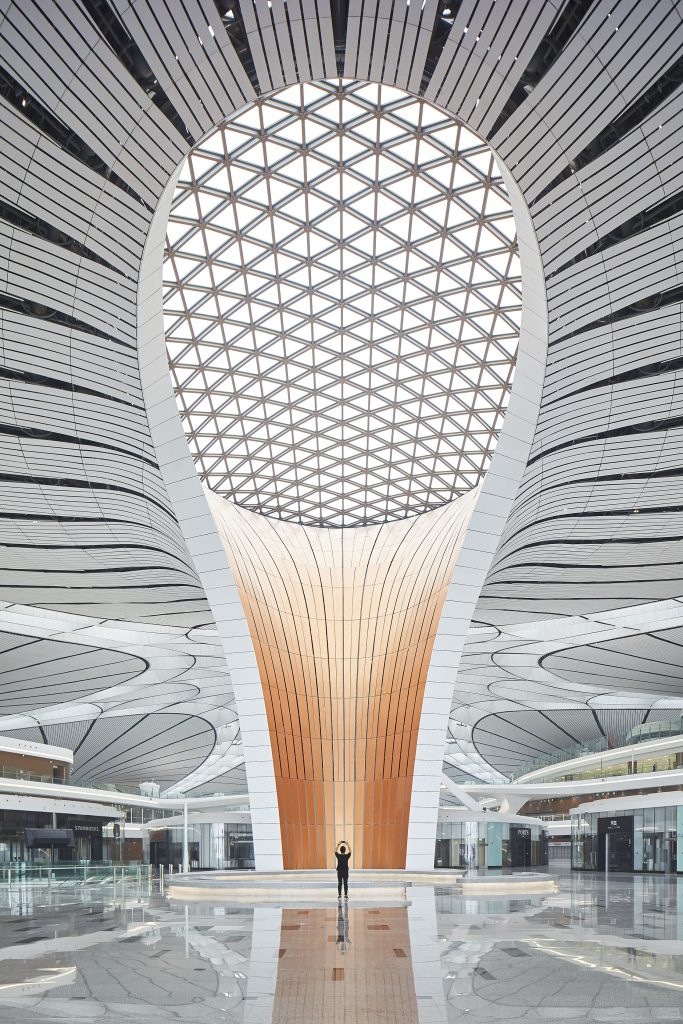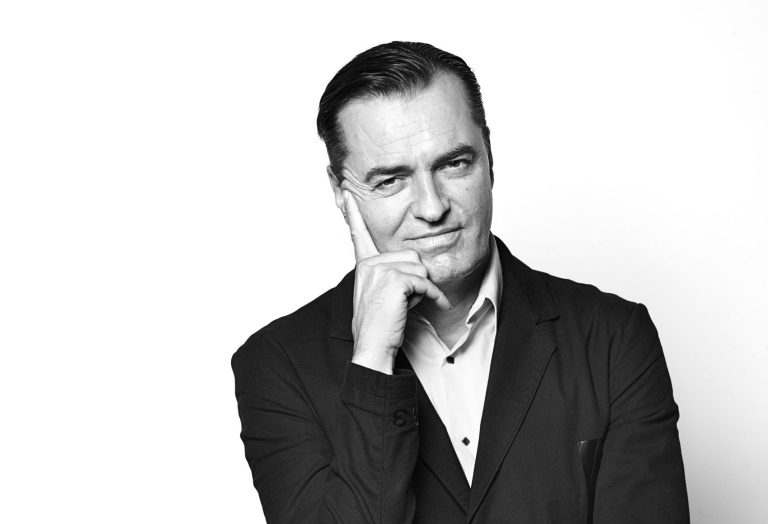
Beijing Daxing International Airport, China, 2019
Photography by HUFTON+CROW
hube: Zaha Hadid was associated with organic architecture and the natural world. In each metaverse, people will build a brand new environment and natural world. How do you feel about this space, which on the one hand is three-dimensional, but on the other, exists in the absence of physical laws?
Patrik Schumacher: The new opportunities in 3D and 4D design creation for the metaverse are very exciting. Not only is gravity absent but also there is no need to protect spaces from the elements. Therefore, the requirement of geometric contiguity of architectural forms, mandated by issues of stability and enveloping, is suspended. Spaces can be formed by non-contiguous swarms of elements.
h: Freedom of creativity is often perceived through restrictions. Where, in your opinion, are the limits for creative self-realisation in the metaverse?
PS: As designers, we do not think in terms of an unbounded creative self-realisation, but rather in terms of utility and creative problem-solving. Aesthetic values are important but need to be understood as sensual intuitive shortcuts to grasp and choose the functional and reject the dysfunctional. The metaverse I am excited about is not a game of entertainment or fantastical escape from social reality, but a functional space for communication, information exchange, and collaboration. For architects, the switch from physical to virtual spaces distills our core competency and responsibility, which focusses on social functionality rather than technical functionality. This distinction is not always clearly understood, because architects have traditionally also been in charge of technical functionality. However, this responsibility has now largely shifted to the engineering disciplines. The total switch-over of the technical conditions and constraints of design (they do exist in the metaverse, too, via polygon count limits, etc.) brings out what architects’ most essential core competency has always been: namely, the ordering and framing of social situations and interactions. I assume functional continuity between physical and virtual modes of productive sociality, constituting a single integrated societal process. The design tasks and problems are equivalent to the extent that physical and virtual spaces are functional equivalents and substitutes for each other. Issues of spatial ordering, and the issue of maintaining perceptual tractability in the face of complexity, as well as the task of a legible semiological articulation, are key challenges for architects with respect to the design of both physical and virtual spaces, as well as for the design of the hybrid conditions of a mixed reality. My theory of architecture refers to these task dimensions as ‘spatiology’, ‘phenomenology’ and ‘semiology.’ They are all crucial in the design of metaverses. There is a further task dimension that comes to the fore strongly with respect to virtual spaces, – although it is also relevant with respect to the design of physical architecture – namely the tasks associated with what I call ‘dramaturgy’. Dramaturgy focusses the designer’s attention on the user’s active engagement and interaction with the space, and opens up the whole domain of responsiveness. It is the equivalent of ‘interaction design’ as a subdiscipline of web design.

